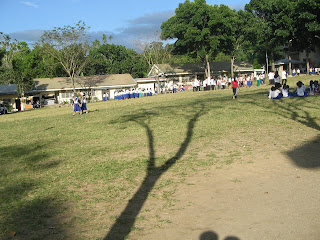It has been months since I posted here so now I post.
When I started teaching the Photography class, especially when the students started pouring their outputs, I started to realize the beauty and simplicity of the subject, so much so I three months before the subject and the school year ends, I started poring over books and internet just to have more things to lesson. So I decided that their their third part of the lesson (after PLACES, PEOPLE) was EVENTS. So I gave the students a Photojournalism field lessons. One thing I learned about Photojournalism lesson was, all the composition must be done BEFORE the actual shooting. In Photojournalism, one has to anticipate - lighting, aperture, shutter speeds before hand. If you have a plain old vanilla DSLR, then you do it. Chances are, the AUTOMATIC must be the best way to do photojournalism. BELOW is not their best photojournalism shots but their FOURTH GRADING OUTPUTS, none of their Photojournalism shot entered in this collage.















